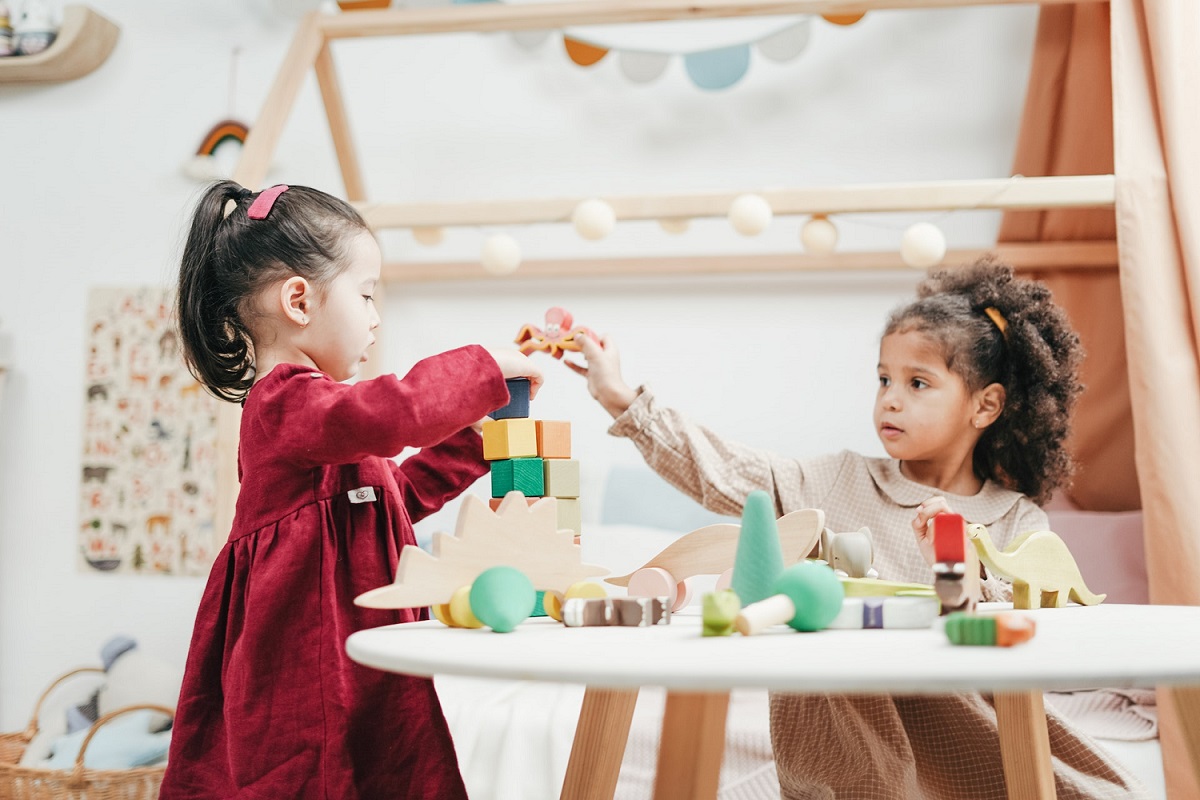
Are you curious about the Ontario Kindergarten Curriculum?
Kindergarten is an exciting experience for children as it may be their first time in school. These two years of learning provides a strong foundation and makes a smoother transition as children enter Grade 1. The Kindergarten program emphasizes play-based learning as it provides many opportunities for children to ask questions, investigate, solve problems and socialize with their classmates. Play provides children many opportunities to construct and expand their own understandings of the world around them as they make connections to their prior experiences. Through inquiry based learning, children are able to explore, engage in critical thinking and express their creativity through the various activities set up by the educators.
As outlined in the Ontario Ministry of Education, The Kindergarten Curriculum is divided into 4 Frames consisting of Belonging and Contributing, Self-Regulation and Well-Being, Demonstrating Literacy and Mathematics Behaviours as well as Problem Solving and Innovating
Belonging and Contributing –This frame addresses children’s learning and development in:
- their connectedness to others, their interactions with others, and an understanding of the community and the natural world
- The arts such as visual arts, dance, music and dramatic play provide a way for children to develop their decision making and communication skills as well as allows them to express their creativity
Self-Regulation and Well-Being -This frame outlines children’s learning in regards:
- to their own thinking and feelings, while also respecting the feelings of others
- self-regulation - regulating their emotions and developing a sense of self-awareness
- an awareness of their physical/mental health and wellness
- how the learning environment can support children to be calm and focused
Some picture books to speak to your child about different emotions are:
- The Way I Feel by Janan Cain
- The Color Monster: A Story About Emotions by Anna Llenas
- Breathe Like A Bear: 30 Mindfulness Moments for Kids to Feel Calm and Focused, Anywhere Anytime by Kira Wiley
Demonstrating literacy and mathematics behaviours- This frame outlines :
- how children express their thoughts and feelings through gestures, words and representation
- literacy behaviours
- ways in which children use language and images to express their ideas/ emotions as they communicate
-
at this age, children are beginning to read and write; therefore, try to incorporate reading and early stages of writing in children’s play or in their everyday activities. Some examples are:
- create a menu for a restaurant
- create a grocery list before they visit the supermarket
- if children are interested in playing with animals, highlight some words in the animal’s habitat
- as children are drawing, encourage them to explain to you what is happening and when they are ready, write a few words to describe their drawing
- mathematics behaviours such as concepts of number and pattern during play
To support children in expressing their ideas about patterns, it can begin with conversations during walks in the community such as do you see any patterns on store signs or the patterns on stones?
Problem Solving and Innovating – this frame outlines:
- Children’s ability to question, critically think, plan, predict, observe and communicate their findings
- Their awareness of the natural and built environment through hands on investigations, observations
- Their ability to use problem solving skills during their interactions with other peers as well as in the creating and design process
Examples of books that can inspire children to express their creativity include the following:


Add a comment to: The Ontario Kindergarten Program